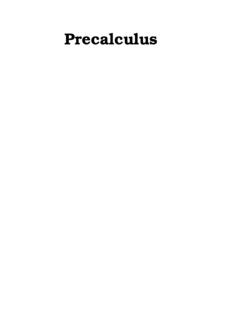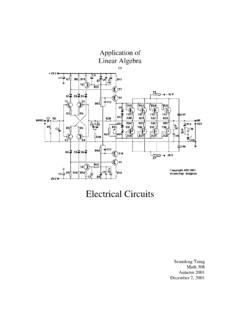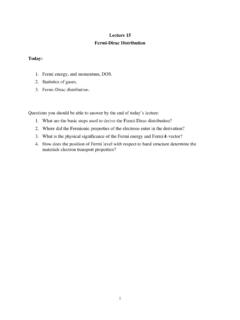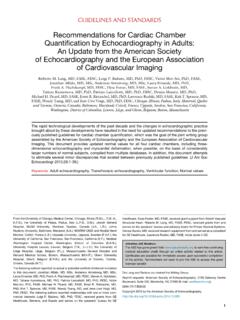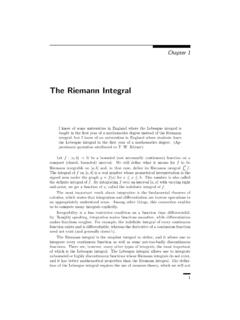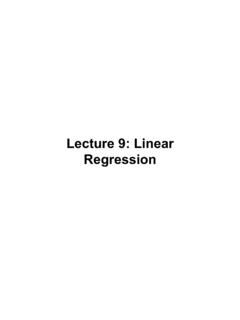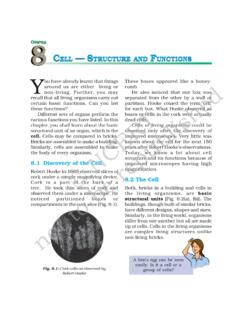Transcription of Mass, Centers of Mass, and Double Integrals
1 Mass, Centers of Mass, and Double IntegralsSuppose a 2-D regionRhas density (x, y)at each point(x, y). We can partitionRinto subrectangles,withmof them in thex-direction, andnin they-direction. Suppose each subrectangle has width xand height y. Then a subrectangle containing the point( x, y)has approximate mass ( x, y) x yand the mass ofRis approximatelym i=1n j=1 (xi, yi) x ywhere(xi, yi)is a point in thei, j-th subrectangle. Lettingmandngo to infinity, we haveM=mass ofR= R (x, y) , the moment with respect to thexaxis can be calculated asMx= Ry (x, y)dAand the moment with respect to theyaxis can be calculated asMy= Rx (x, y) we may calculate the center of mass ofRviacenter of mass ofR= ( x, y) =(MyM,MxM).
2 Example 1 LetRbe the unit square,R={(x, y) : 0 x 1,0 y 1}. Suppose the density ofRis given by thefunction (x, y) =1y+ 1so thatRis denser near thex-axis. As a result, we would expect the center of mass to be below thegeometric center,(1/2,1/2). However, since the density does not depend onx, we do expect x= 1 have:M= R1y+ 1dA= 10 101y+ 1dy dx= 10ln(y+ 1)|10dx= 10ln 2dx= ln 2 = Ryy+ 1dA= 10 10(1 1y+ 1)dy dx= 10(y ln(y+ 1))|10dx= 10(1 ln 2)dx= 1 ln 2 = Rxy+ 1dA= 10 10xy+ 1dy dx= 10xln 2dx=12x2ln 2|10=12ln 2 = the center of mass is( x, y) =(MyM,MxM)=(12ln 2ln 2,1 ln 2ln 2)=(12, ).
3 Example 2 (Polar)Let0 z 1. LetRbe the polar regionR={(r, ) :z r 1,0 2}.SupposeRhas constant density . Then:M= R dA= RdA= area ofR= ( 4 z24)= 4 (1 z2).Mx= R y dA= 1z /40r2sin d dr= 1z r2cos | /20dr= 1zr2dr=13 (1 z3).My= R x dA= 1z /20r2cos d dr= 1zr2sin | /20dr= 1zr2dr=13 (1 z3).Thus, the center of mass is( x, y) =(13(1 z3) 4(1 z2),13(1 z3) 4(1 z2)).An interesting feature of this region is that ifzis sufficiently large, the center of mass will be outsidethe region. This happens when the distance from the center ofmass to(0,0)is less thanz.
4 That is,when 213(1 z3) 4(1 z2)< factoring, we see that this is equivalent to 23(1 +z+z2) 4(1 +z)< criticalzvalue is the positive solution to0 =z2+z 23 4 23which is Thus, ifz > , the region is very thin, and the center of masslies outside of the region.
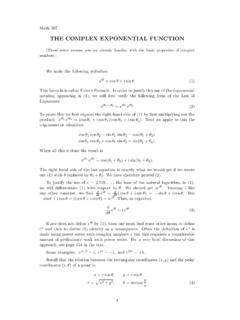



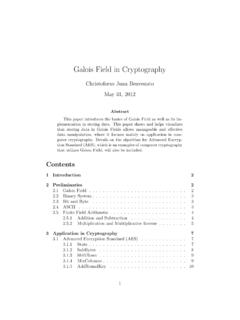
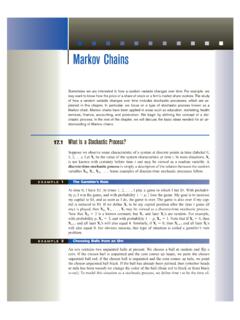
![ZZ dA R [0 2] R - University of Washington](/cache/preview/6/4/c/c/9/f/d/6/thumb-64cc9fd6ac93e2995c04a2a74b217176.jpg)
